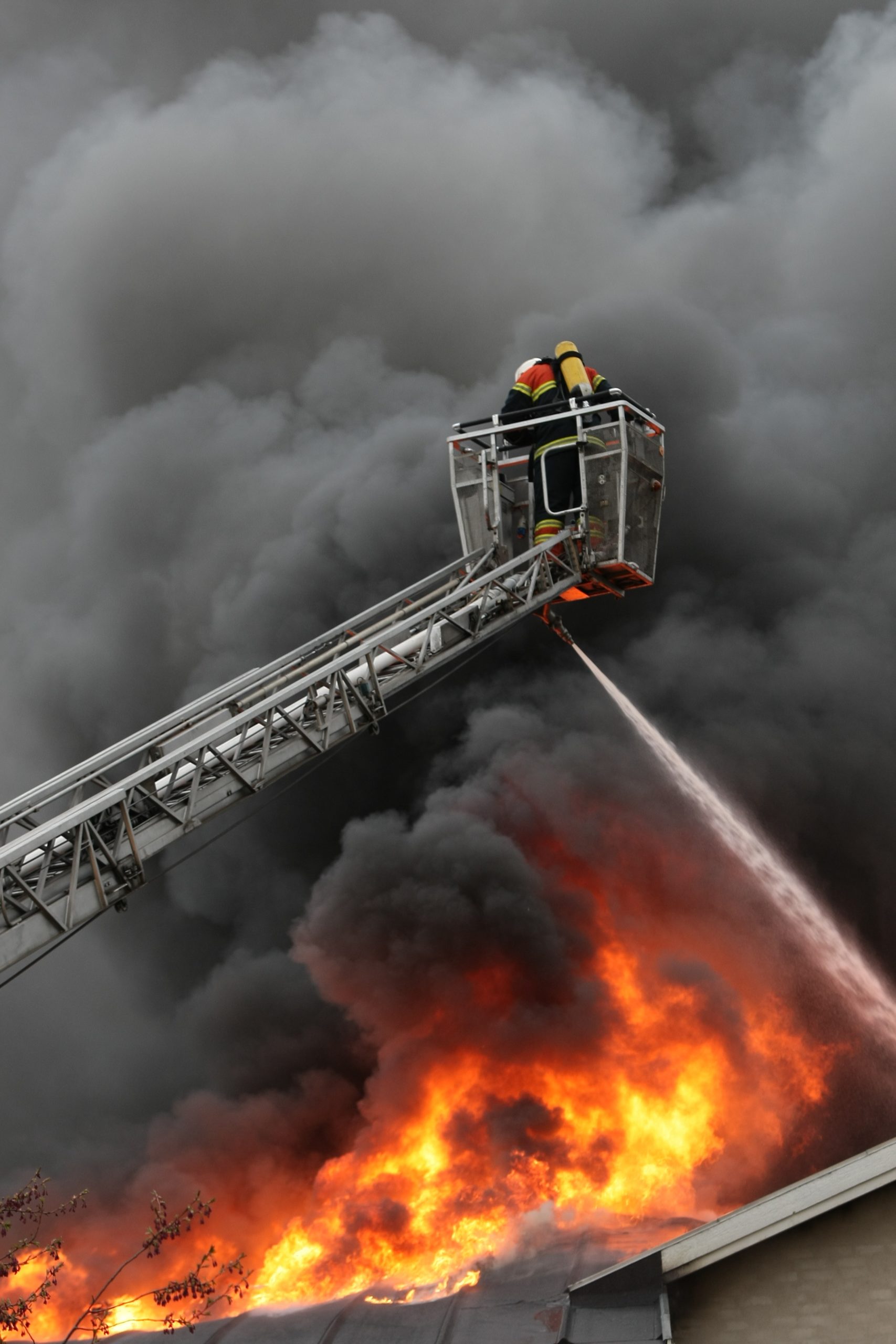Fire season started early in 2022. Our editors have already tracked fires in Arizona, Colorado, Nebraska, New Jersey, New Mexico, Oklahoma and Texas. NOAA is warning that drought conditions in the western United States are worse in 2022 than 2021, which was worse than 2020. With drought, comes fire. In 2021, there were record wildfires. Security, business continuity and resiliency professionals must prepare to protect assets in urban areas as fires cross the wilderness-urban boundary with more frequency.
Borrowing from Allied Universal’s 7 Components of an Emergency Plan, this story focuses on how corporate security and resilience can prepare for 2022’s expected fire season.
Planning
After several years of news regarding wildland fires spreading into urban areas, no security team can think “it will never happen here.” Fire is an expanding threat to people and places in urban areas. Establishing or re-establishing your plan now can save lives and minimize financial losses as late spring and summer approach. Plan to have enough emergency kits and evacuation routes for each of your locations.
Emergency Kits
The Texas A&M Forest Service recommends that everyone have an emergency kit on hand.
“With continued wildfire risk, being prepared is more important for your family now than ever,” said Karen Stafford, Texas A&M Forest Service wildfire prevention coordinator. “The best way to prepare for wildfires is by creating multiple evacuation routes and a go-kit for your family.”
TAMU AgriLife Today
Don’t count on employees having an emergency kit at home and another at work. Your organization should prepare for a significant number of employees not having a kit with them while working. Kits should include extra water, food, flashlights, power cords with various connections, a few spare phone batteries and a radio or two just in case the local cell towers go out.
Evacuation plans

A key portion of the U.S. EPA fire season plan involves evacuation routes. Standard fire planning typically involves two exits out of the building to the street or parking lot. A plan that prepares for a wildland fire spreading to your structure should be ready to put significant distance between your charges and the fire zone.
The EPA plan also addresses a secondary impact from wildland fires — smoke season. Protective masks (N95, KN95) and high ventilation HVAC in areas with potential for lung-damaging smoke are a necessity, especially for enterprises with individuals who have lung or heart conditions.
Even when fires are states or provinces away, weather patterns can bring smokey haze. This will limit visibility and reduce the amount of time people can safely work or exercise outdoors. Planning for smoke should be part of your wildfire plan. Dense urban areas will suffer unhealthy or even hazardous air quality, with new peaks of air pollution in summer.
Training, Drills and Education
These are individual, overlapping steps in the Allied Universal guide. Your organization may use different processes or consolidate these steps. TDE starts with safety and security leaders, and should then expand to general management and eventually include every member of the organization at certain levels. A general staff member should be drilled frequently enough that they are prepared, but not so frequently that they are bored — that can create inaction during the actual events due to false assumptions.
Technology
Modern technology can aid your wildland fire plan in a few ways — prevention, warning and communication.
Prevention
CalFire maintains two key wildfire prevention instructions.
The first is One Less Spark. Equipment maintenance and individual care goes a long way towards reducing the number of wildfires. Just as individuals should take actions, so should corporations. Fleet management should maintain vehicles so that sparks do not trigger fires in street-side brush. Building management should also work to prevent potential hazards.
Additionally, building management and/or security resources should establish Defensible Space. This reduces the threat of wildfire spreading towards your assets. It shows leadership awareness of the threat to employees and is the neighborly thing to do. Your preparations signal to staff, visitors and locals that your organization prioritizes safety.
Warning
Factal helps here. The early, fast coverage alerts security teams that protect millions of employees. Make certain that your security and preparedness team are following the Wildland Fires topic (members only) on Factal. Have your organization’s Factal members turn on the three map layers related to fires (settings->maps-> and then just below weather). If there are fires near your locations True Impact means you do not need to increase your radius of awareness. Instead, True Impact knows that wildfires have a larger impact zone than many other news events. Check with your organization admin to make sure True Impact is turned on!

Those without Factal should subscribe to the Factal Forecast newsletter and podcast for warnings about the potential for wildland fire spread towards your key locations or people. AirNow is the U.S. EPA’s site tracking air quality, which can be an indicator that fires are close. The National Interagency Fire Center provides mapping resources for the United States. In Canada the Canadian Wildland Fire Information System maintains their maps.
Local and state resources vary. Connect with those individually and assign as appropriate for your GSOC or regional security centers.
Communication of Threat
There are several tools to help communicate with employees under your scope. Factal partner Everbridge is one of those. Put together a plan that uses multiple notification methods, because if a wildfire spreads rapidly into spaces threatening your assets they may not have access to a single means of communication. Be prepared to use app notifications, email, and text messages. Many Factal member organizations have built their own bespoke communication systems.
Coordination
Cooperating with other building tenants is key to all security measures. In the case of fires which could jump streets, parking lots and green belts, you’ll need even more coordination. Corporate security and risk intelligence functions benefit from collaboration. Just as cyber and threat intelligence teams work together to prevent and reduce threats, an effective fire plan should include neighbors that are able to work with you to minimize harm.
Coffey, one of the communities struck by the Tubbs Fire of 2017, strongly recommends community resilience. A wildfire that spreads into urban areas is a general threat, not one that only hits a single home or business.
As neighbors we can help to ensure we are all prepared for the next emergency. Encourage each other to be prepared, know which neighbors might need support preparing for or during an evacuation.
Coffey Strong
Communication
Share your fire plan, both from natural causes or arson, with everyone in your scope as well as local authorities. You already have connections with police and fire in the area. Reconnect with them soon to share your wildfire plan and so that you know their plans.
A business or NGO that prepares for wildfires sufficiently reaps extra benefits. Their people are more prepared for the fires that could threaten them outside of business hours. That makes things easier for executive protection and travel security teams within your scope.
Preparing now can prove the value of your continuity program when wildfires affect your people and assets.
Lead photo: Man in Black Jacket Standing on Black Metal Tower (Michael Noel/Pexels)
What is Factal?
Trusted by many of the world’s largest companies and nearly 300 humanitarian NGOs, Factal is a risk intelligence and collaboration platform that brings clarity to an increasingly noisy and uncertain world.
Powered by a hybrid of advanced AI and experienced journalists, Factal detects early signals, verifies critical details and assesses the potential impact at the speed of social media. From physical incidents and brand mentions to geopolitical developments, Factal offers the most trusted, real-time risk intelligence on the market.
Factal is also home to the largest security and safety collaboration network in the private sector. Members securely share information with other members in proximity to the same incident, both on Factal.com and the Factal app.
Learn more at Factal.com, and we’d love to hear from you.

